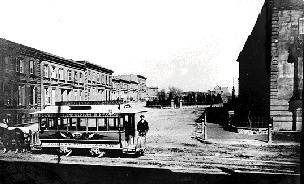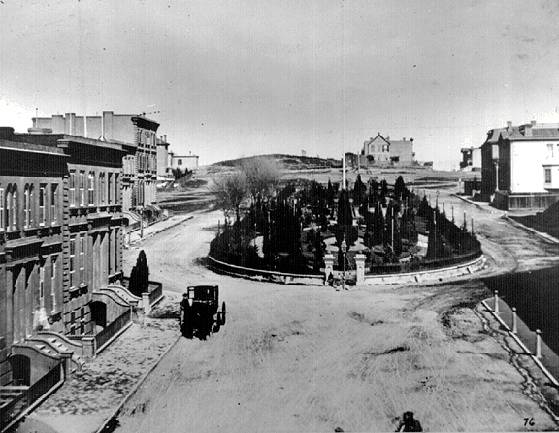SOUTH PARK: Difference between revisions
mNo edit summary |
m (added page content type) |
||
| Line 1: | Line 1: | ||
'''<font face = arial light> <font color = maroon> <font size = 3>Unfinished History</font></font> </font>''' | |||
''courtesy Northern California Coalition on Immigrant Rights'' | |||
[[Image:soma1$south-park-1865-east-2.jpg]] | [[Image:soma1$south-park-1865-east-2.jpg]] | ||
| Line 16: | Line 20: | ||
Other communities who lived in this neighborhood were the Japanese, Greeks and the Irish, many of whom were displaced after the 1906 earthquake/fire. African Americans also lived in the area during the 1950s and 60s after coming to find work in San Francisco during World War II. Most African Americans were [[RESIDENTIAL vs. TOURIST HOTELS | renters]] and were forced out in the 1980s when South Park started to become a trendy, artsy neighborhood. South Park has since become, once again, a ''chic'' neighborhood for middle and upper-class San Franciscans, often referred to as the heart of "Multimedia Gulch." | Other communities who lived in this neighborhood were the Japanese, Greeks and the Irish, many of whom were displaced after the 1906 earthquake/fire. African Americans also lived in the area during the 1950s and 60s after coming to find work in San Francisco during World War II. Most African Americans were [[RESIDENTIAL vs. TOURIST HOTELS | renters]] and were forced out in the 1980s when South Park started to become a trendy, artsy neighborhood. South Park has since become, once again, a ''chic'' neighborhood for middle and upper-class San Franciscans, often referred to as the heart of "Multimedia Gulch." | ||
Revision as of 21:33, 17 January 2009
Unfinished History
courtesy Northern California Coalition on Immigrant Rights
Horse Drawn Trolley at South Park, 1865; 3rd Street in foreground.
Photo: San Francisco History Center, San Francisco Public Library
South Park, 1865: looking northeast from 3rd Street (up Rincon Hill)
Photo: San Francisco History Center, San Francisco Public Library
South Park was created by British immigrant George Gordon. Upon his arrival in San Francisco, Gordon became a lumber dealer and began to build wharves. He established one of San Francisco's first iron foundries and built California's first successful sugar refinery. Gordon designed South Park in four sections according to the English crescent formation. The area was intended exclusively for private dwellings and, along with Rincon Hill, was one of San Francisco's first elite areas.
This neighborhood, however, became surrounded by industrial buildings and lost its upper-class character as warehouses and hospitals blocked the prized view. The cut made by the creation of Second Street in 1868 was another major factor in reducing land values. By the 1870s, the well-to-do had abandoned South Park and moved to Nob Hill, where access was limited and the views spectacular. As the wealthy and middle classes left South Park, working-class people began to move in, to live closer to the shipping docks and warehouses where they worked. Japanese immigrants in the late 1800s also settled in this area. Rebuilding after the earthquake and fire in 1906 definitively sealed its future as a working class neighborhood.
Other communities who lived in this neighborhood were the Japanese, Greeks and the Irish, many of whom were displaced after the 1906 earthquake/fire. African Americans also lived in the area during the 1950s and 60s after coming to find work in San Francisco during World War II. Most African Americans were renters and were forced out in the 1980s when South Park started to become a trendy, artsy neighborhood. South Park has since become, once again, a chic neighborhood for middle and upper-class San Franciscans, often referred to as the heart of "Multimedia Gulch."


